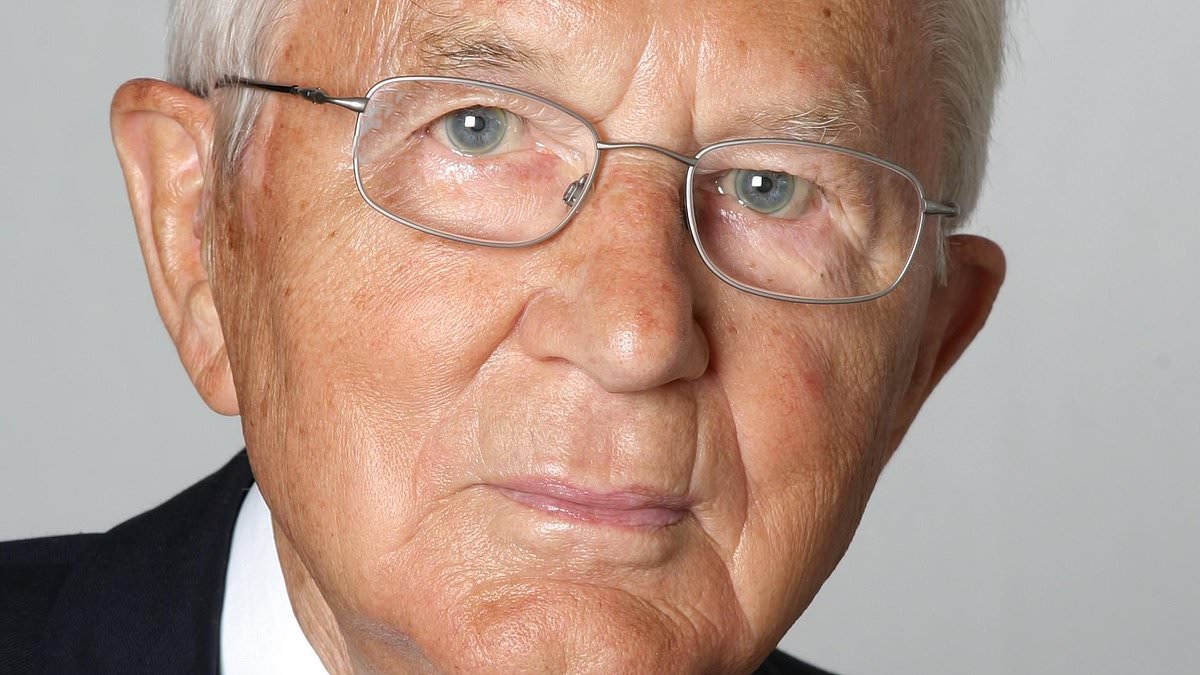Secrets of the billionaire Aldi brothers who fought for Hitler as huge USA takeover of 225 more stores planned
By Editor,Wilko Martinez-Cachero
Copyright dailymail

Aldi is going full steam ahead with its US expansion, as the German supermarket is scheduled to open more than 225 US stores in America by the end of the year and a New York City flagship store next summer.
The origins of the store, known for its affordable options, harken back to the Second World War when brothers Theo and Karl Albrecht took over their mother’s Essen grocery store in Germany.
The low-cost supermarket now plans to have around 3,200 US locations open by 2028, which would make it the country’s third–largest chain in terms of stores. Its NYC flagship store is planned for a prime location in Times Square.
The huge growth is a world away from the humble beginnings of the firm’s founders who have a very colorful past which includes fighting for Hitler, being held prisoners of war and later one of the brothers was kidnapped for ransom.
Theo was captured by the allies in Italy after fighting under Erwin Rommel, the Nazi Germany general, in North Africa.
Karl suffered the same fate after being sent to the Eastern Front, almost losing his leg in the process.
Once the war ended, the Albrechts returned to their home country and started running their mom Anna’s ‘Karl Albrecht Spirituosen und Lebensmittel’ grocery store. Then success came quickly.
The brothers went from running their mom’s grocery store in Schonnebeck to suddenly owning 13 stores in the Ruhr Valley by 1950 and 300 stores countrywide by 1960.
The Albrechts stood out because of their frugality.
Theo reportedly ‘always wore cheap, ill–fitting suits’ and used pencils to the stub since they were cheaper than pens.
This philosophy extended into the Albrechts’ business model.
The brothers refused to spend money on advertising and immediately got rid of poor–selling items. Their produce was down–marked by 20 percent in comparison to competitors.
In 1961, the name Aldi – short for Albrecht Discount – was created. But Aldi soon hit a roadblock. Theo wanted to sell cigarettes, while Karl did not.
As a result, the brothers split the company in two – although there were also rumors that this was due to the brothers’ differing personalities and leadership styles.
Theo got everything in the north of Germany under the name Aldi Nord, and Karl got the south as Aldi Sud.
Karl, who was famously secretive, rarely spoke publicly, but in 1953 he said Aldi’s fundamental principles, were ‘narrow product range and low price’.
Theo was similarly low profile to the point of being reclusive, a trait that doubtless owes much to the dramatic events of 1971, when he was kidnapped at gunpoint by convicted burglar ‘Diamond’ Paul Kron and his crooked lawyer, Heinz Joachim Ollenburg,
They kept Theo prisoner in a cupboard in Dusseldorf for 17 days while the ransom (£1.5 million) was thrashed out.
The cash ended up being dropped off at a rendezvous point, but the kidnappers were arrested.
Only half the money was ever retrieved and the two kidnappers, who both died in 2017, took to their graves the truth about what happened to the rest.
Frugal Theo later tried in vain to have the ransom written off by the taxman as a business expense.
Quite understandably, in subsequent years he became ‘more reclusive than a yeti’. Yet his eye for business – and for saving pennies – was acute.
As well as wearing pencils down to the nub, he was a stickler for switching off lights, and apparently once ordered his board to take a look at the needlessly thick paper being used in the photocopier.
Karl, meanwhile, was by all accounts slightly less ‘intense’ – even allowing himself a daily afternoon nap.
He designed the layout of some of the Aldi stores himself, and considered his regular trips to various Aldi’s ‘a lot of fun’.
In 1976 Aldi arrived in the US under Karl’s Aldi Sud when a Giant Food grocery store in Iowa City, Iowa, unexpectedly closed and was reopened as the inaugural stateside Aldi.
The German grocer made no secret of its intentions. An ad on the Iowa City Press–Citizen newspaper read: ‘Only the Aldi way gives you such low, low prices!
‘18.4 percent savings at Aldi.’
It bragged that Aldi had no ‘fancy shelving’ or ‘fancy fixtures’ in favor of ‘fast checkout’ and ‘little advertising’.
Customers were invited to compare for themselves and directly asked, ‘Why pay more?’
That Iowa City location ended up shuttering, but it set the tone for Aldi’s operations and eventual explosion in the US.
Three years later after Karl took Aldi to Iowa, Theo bought Trader Joe’s.
The California grocer is perhaps the most apt comparison to what customers can expect to find at an Aldi store.
Outside of the grocery business, very little is known about the secretive brothers.
Theo retired in 1993, while Karl fully stepped down from Aldi in 2002.
Both were among the richest men in the world when they died in 2010 and 2014, respectively, with a combined fortune of $38.8billion.
Their legacy lives on through Aldi, although there have been some spats along the way.
When Theo’s wife Cäcilie died, her will called for her and five of her grandchildren to be excluded from future business decisions.
She accused them of financing their luxury lifestyles by spending money in a way that was out of line with the family’s frugal lifestyle, saying: ‘With this document I undertake to ensure the preservation of the philosophy of our family, which is to serve the consortium Aldi Nord and to foster this, at the same time as setting aside self–interests and practicing a modest and abstemious way of life.’
Aldi now has more than 7,000 stores worldwide and a massive footprint in the UK and the US.
Nowadays, the Aldi experience is markedly different from going to a grocery giant such as Walmart, Publix or Walgreens.
It starts with the prices. About 90 percent of Aldi’s products come from its own private–label brand, making the final price cheaper than when relying on outside names.
The stores are much smaller – on purpose so that customers can get in and out quickly.
That quickness and efficiency is replicated with how Aldi’s products are laid out.
Items are displayed in their original shipping boxes, which saves time and product when it comes to restocking shelves and aisles.
When one cardboard box of tomatoes finishes, a different one is promptly hauled out.
This process is not as pretty as what many US customers have grown used to, but it is paying dividends – and customers are paying money.
Aldi’s year–on–year visits from August 2024 to May 2025 are up by 7.4 percent, according to Placer.ai.
That becomes even more impressive when zooming out, as Aldi’s average visits per location were up 26.7 percent in 2025 compared to just three years ago.
Nearly half of Aldi’s new stores will be reconverted Winn–Dixie and Harveys Supermarket locations after the German grocer bought the chains in 2023.
Its New York City location will be 25,000 square feet – larger than most Aldis.



